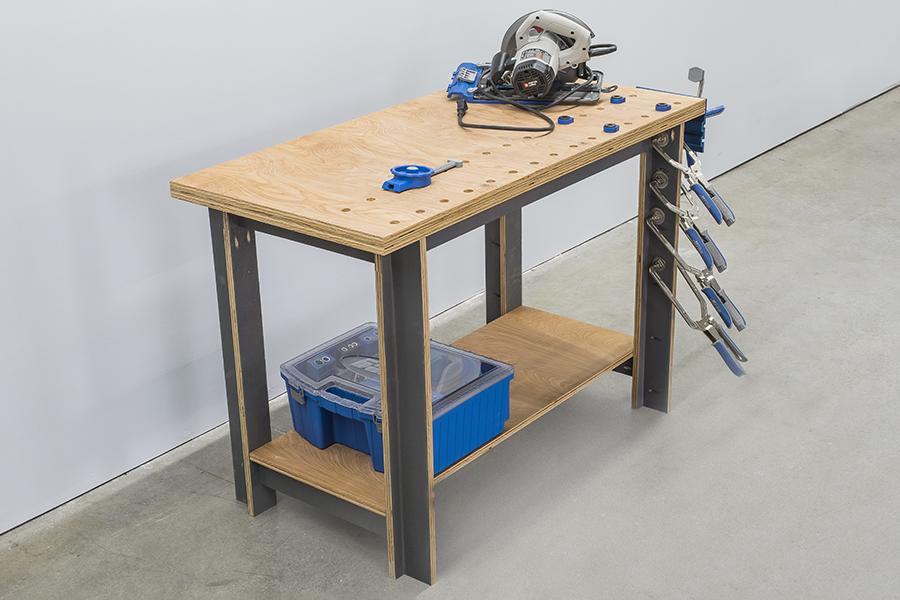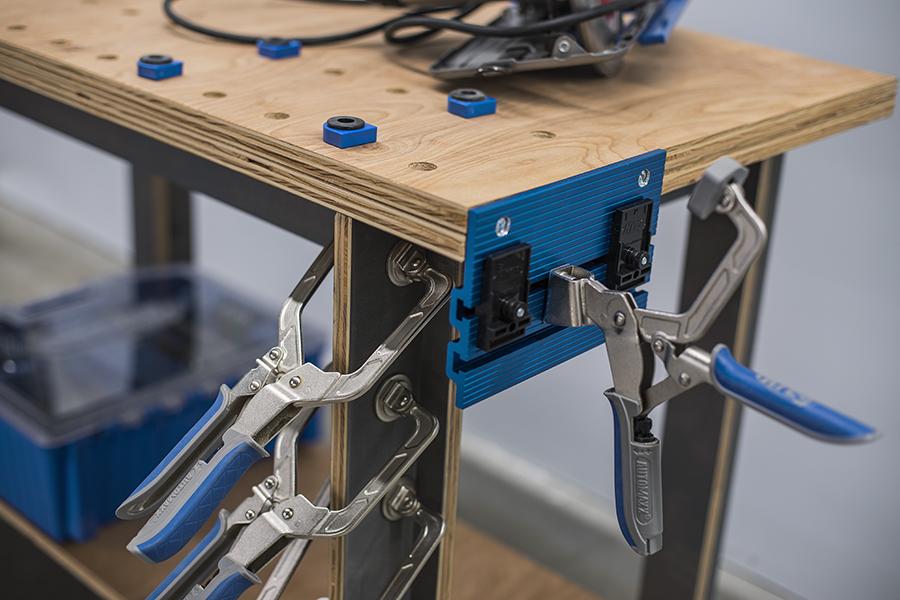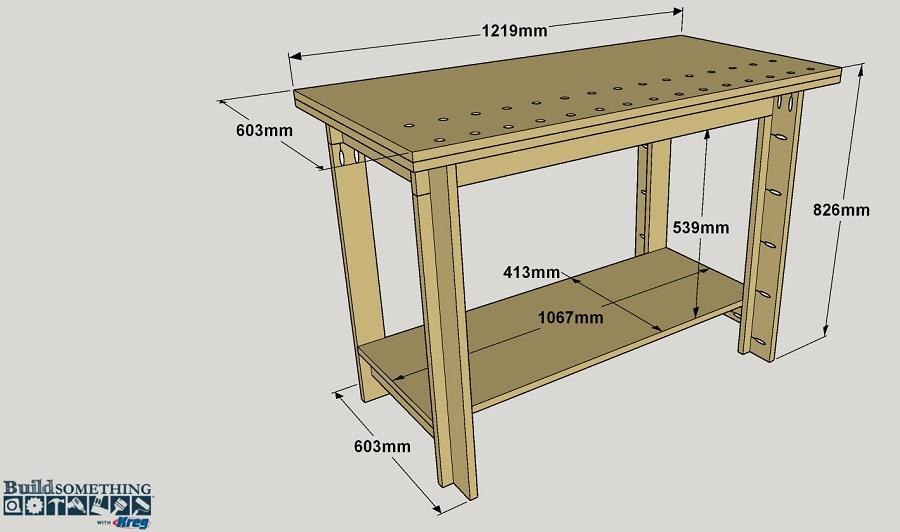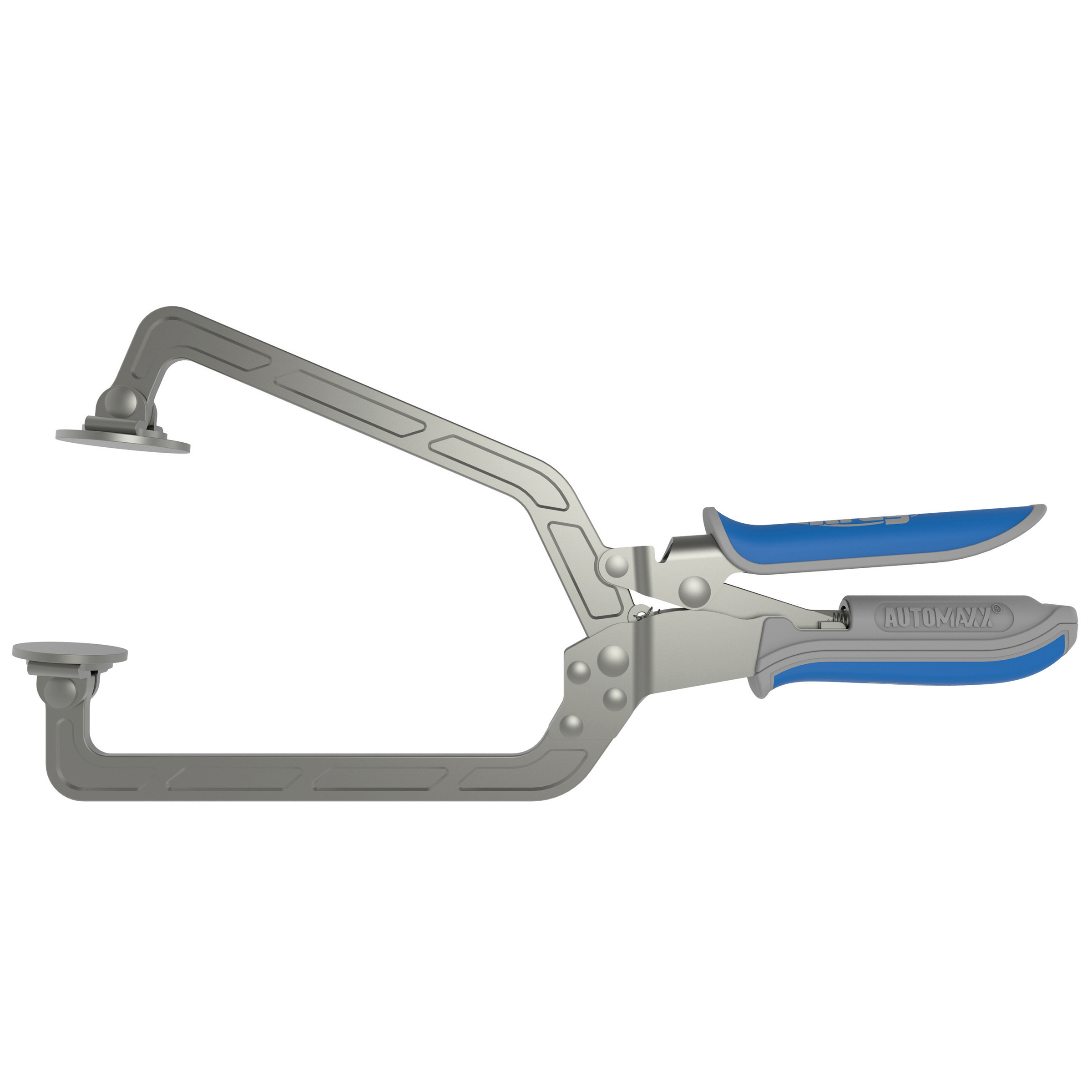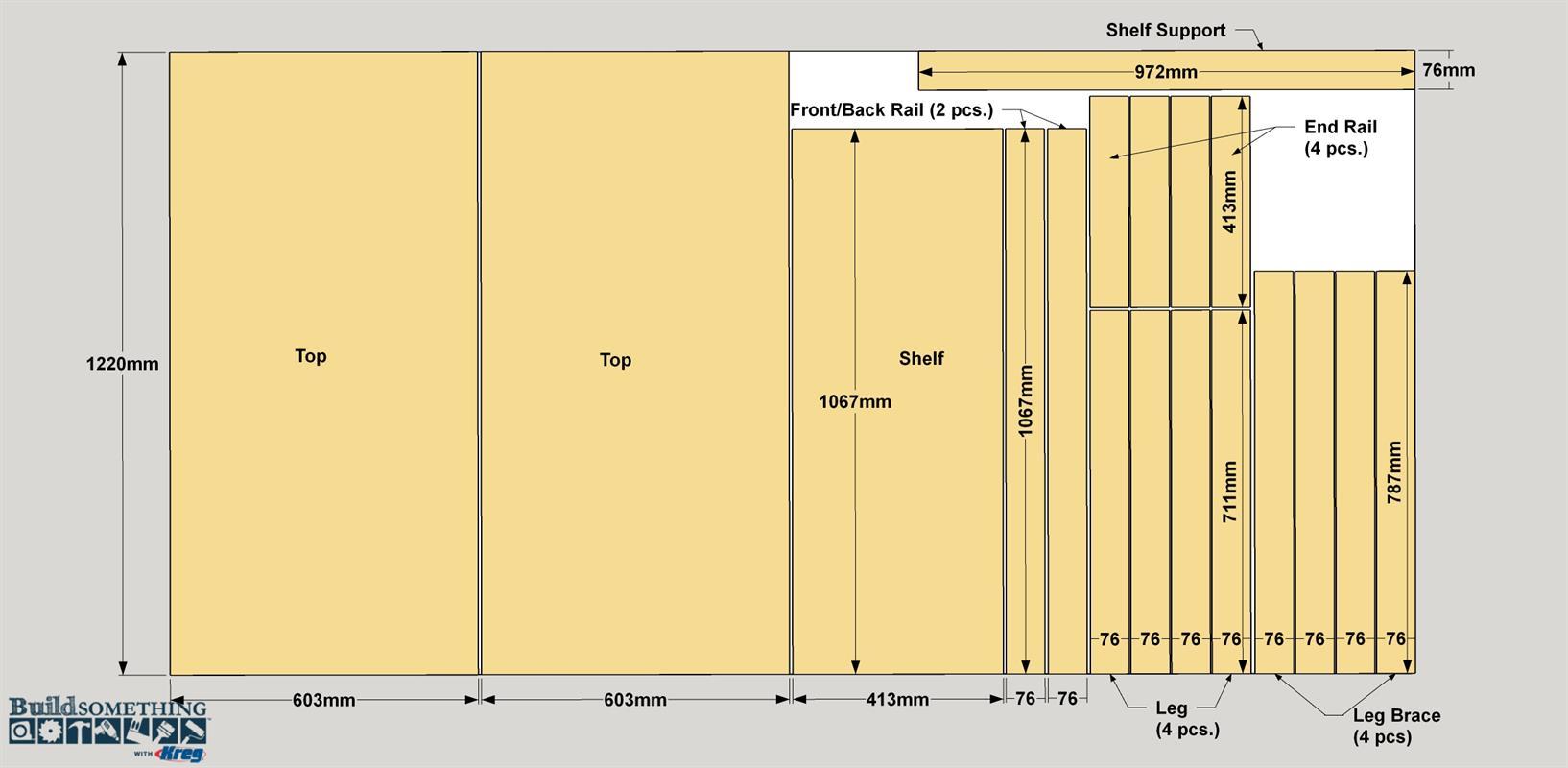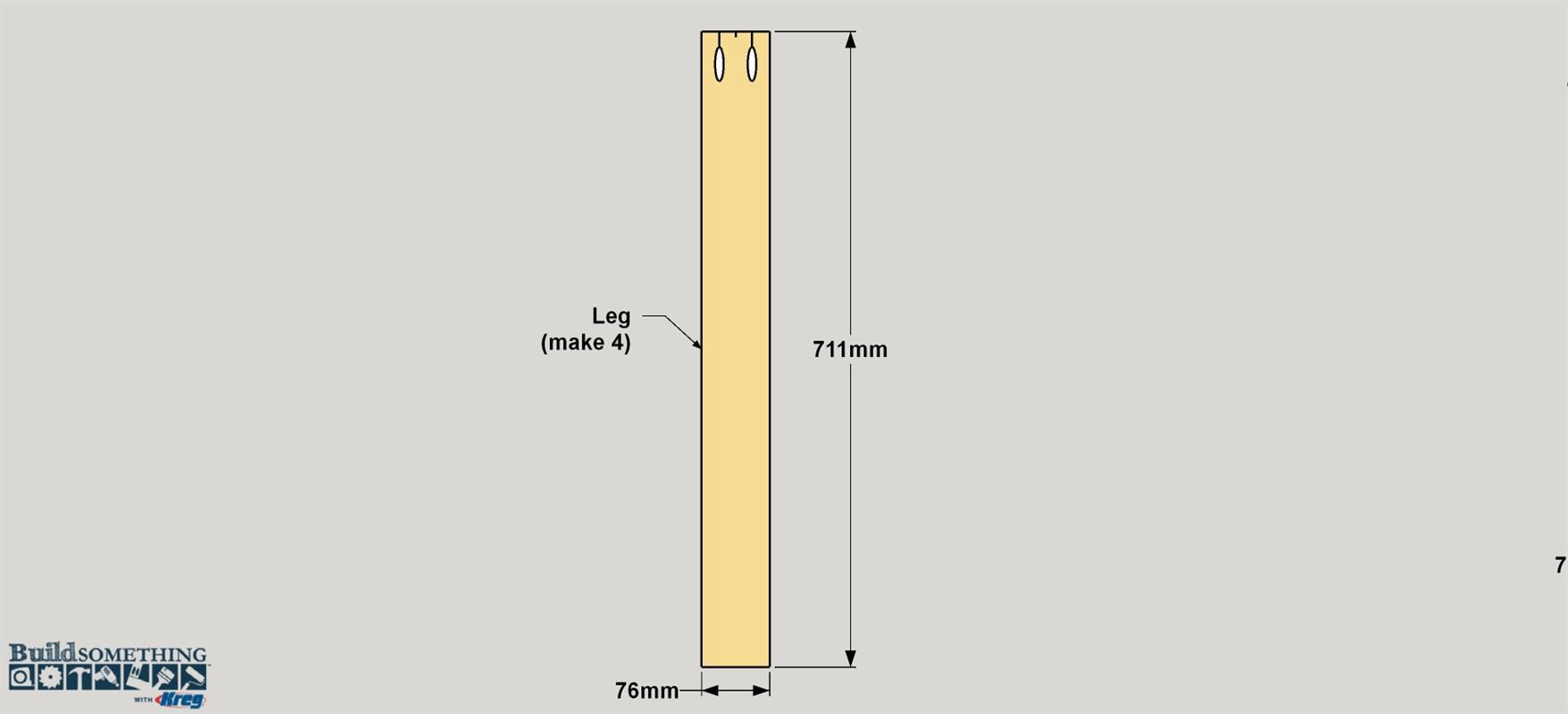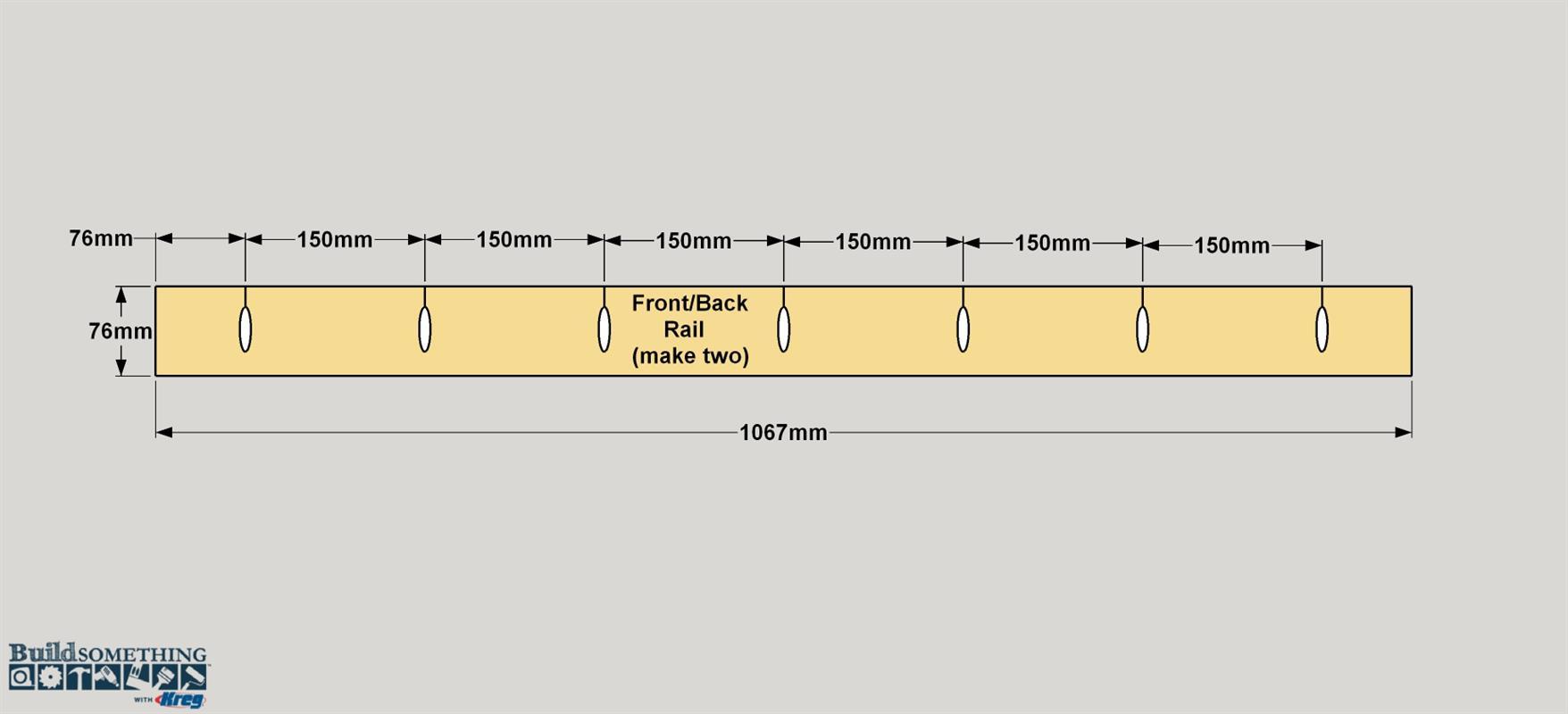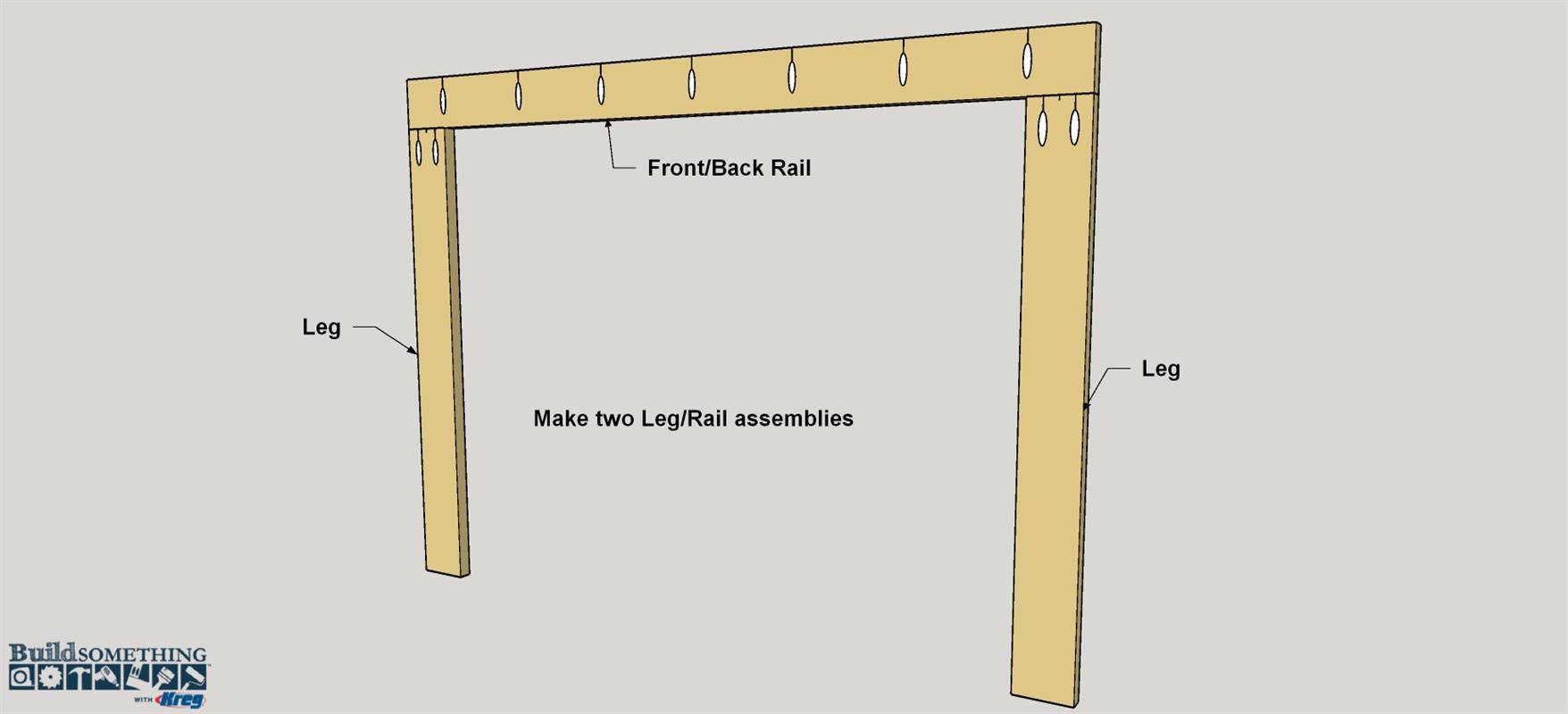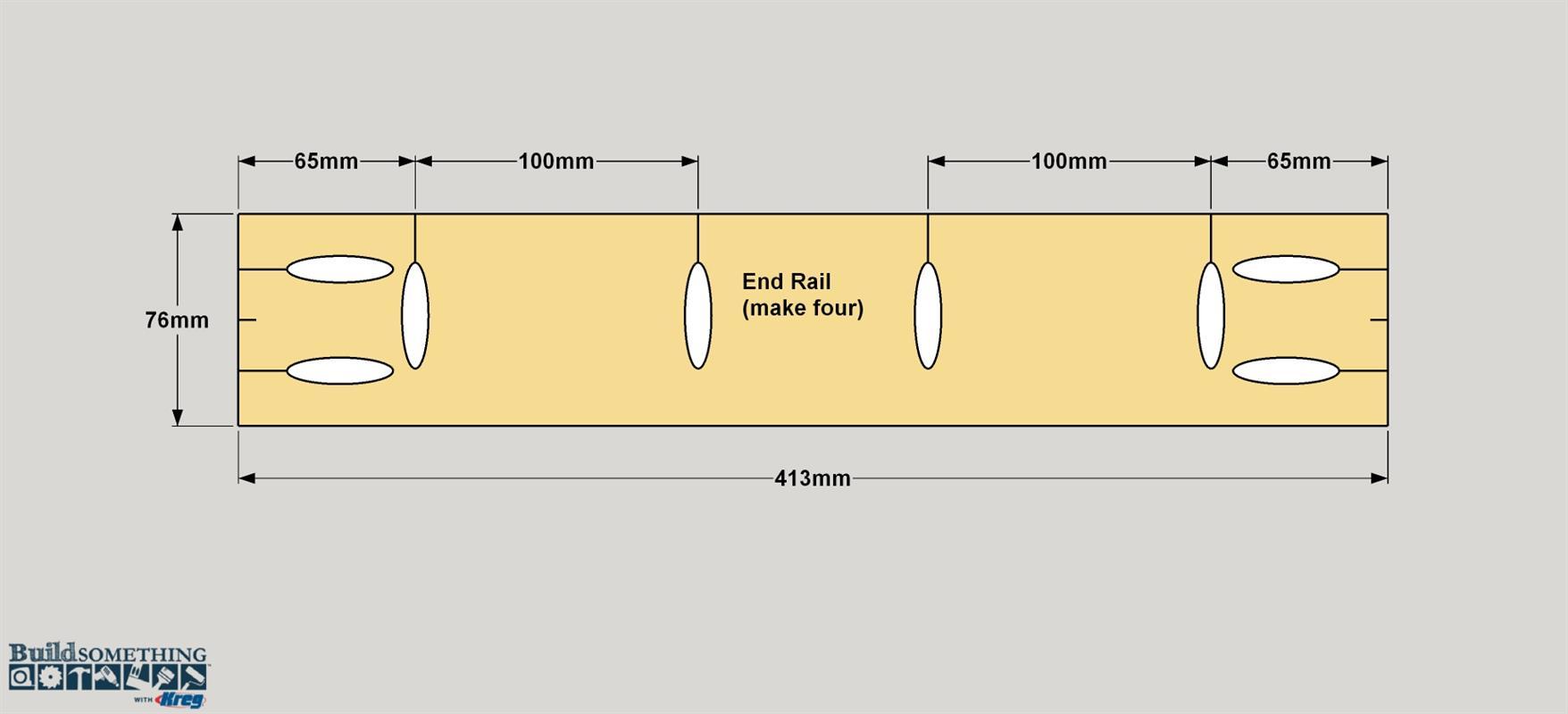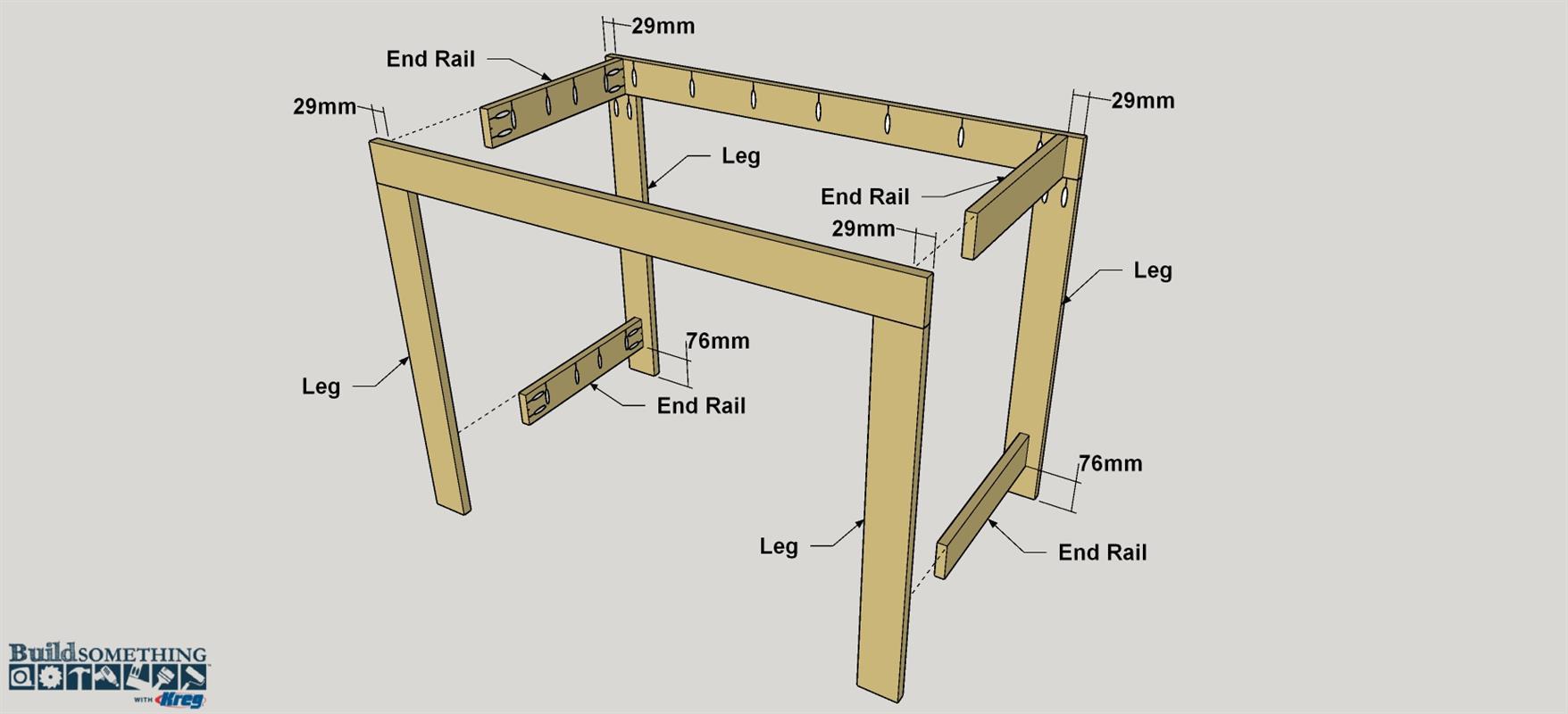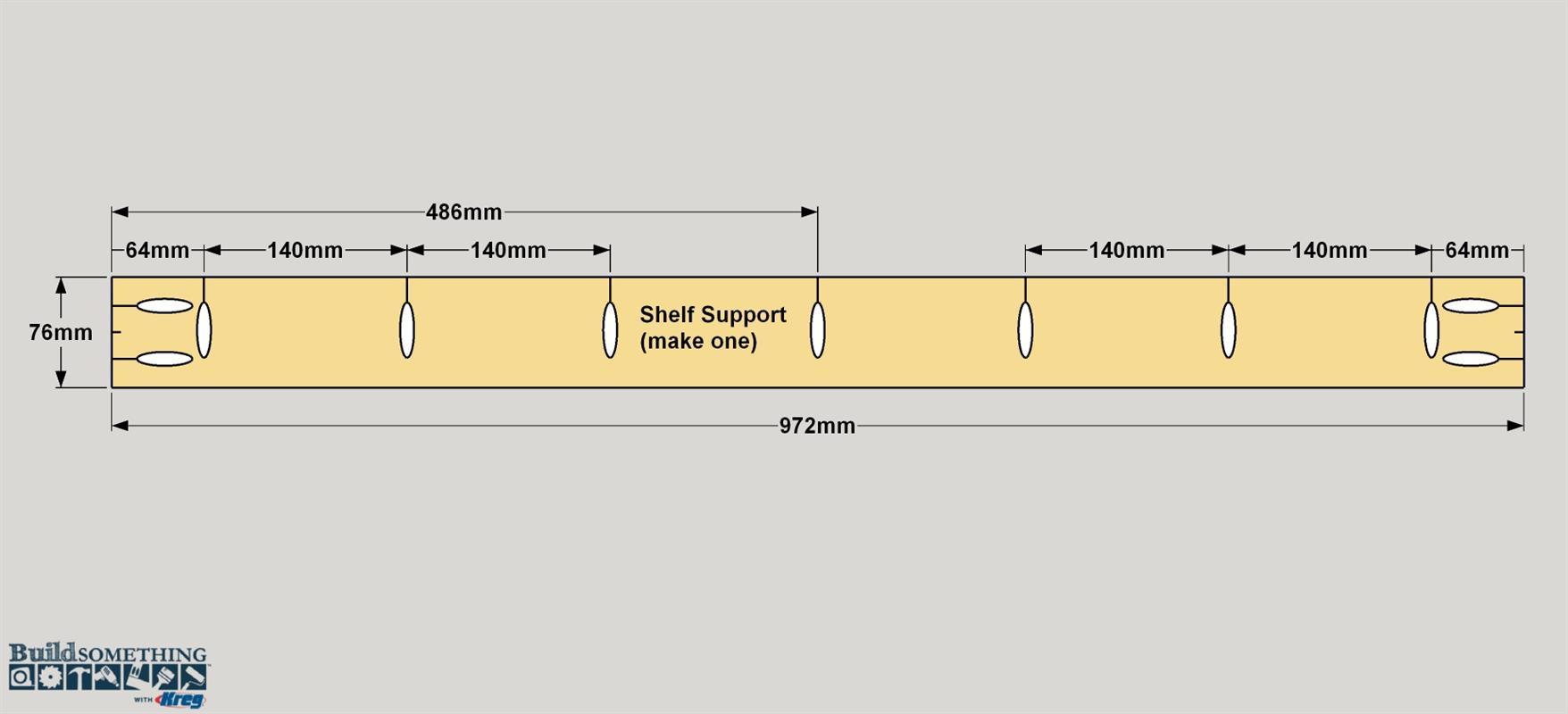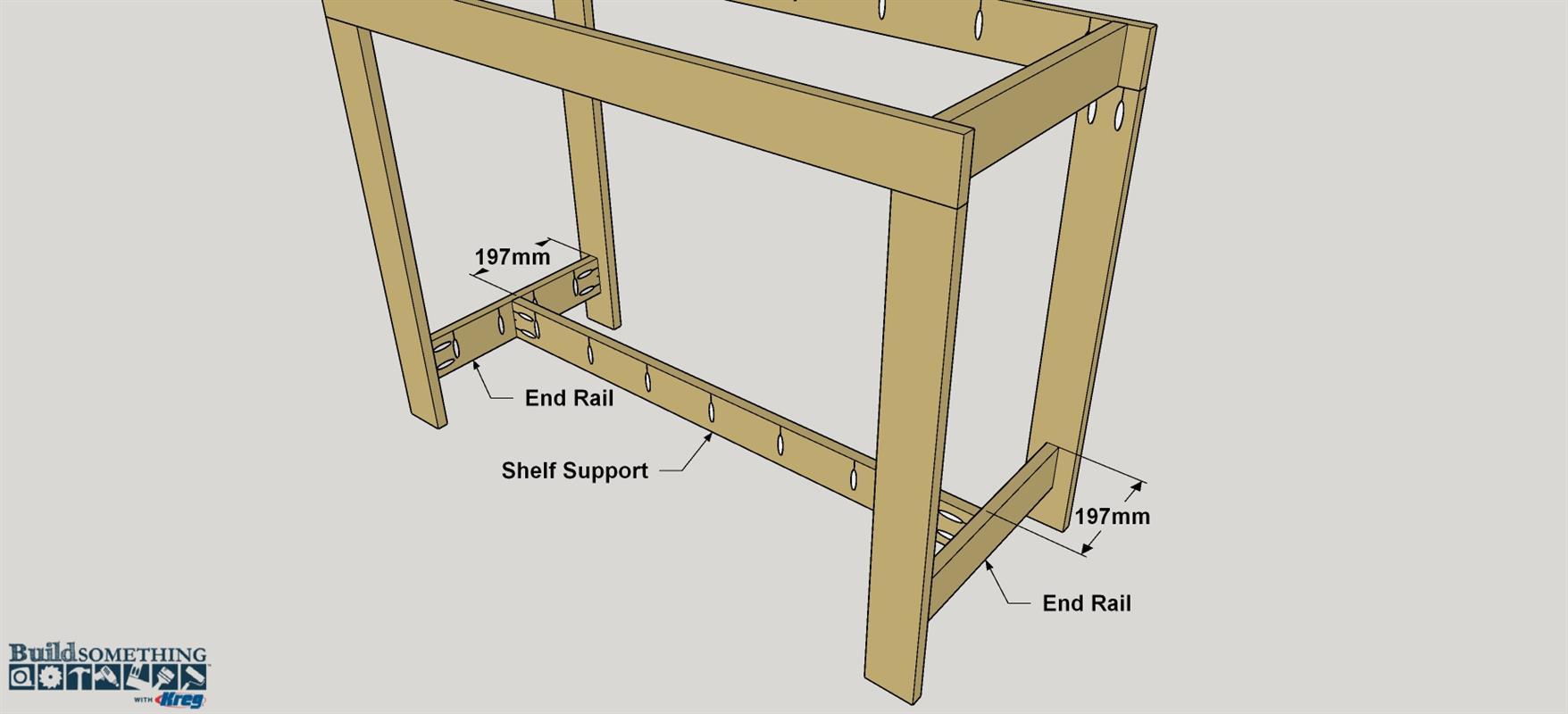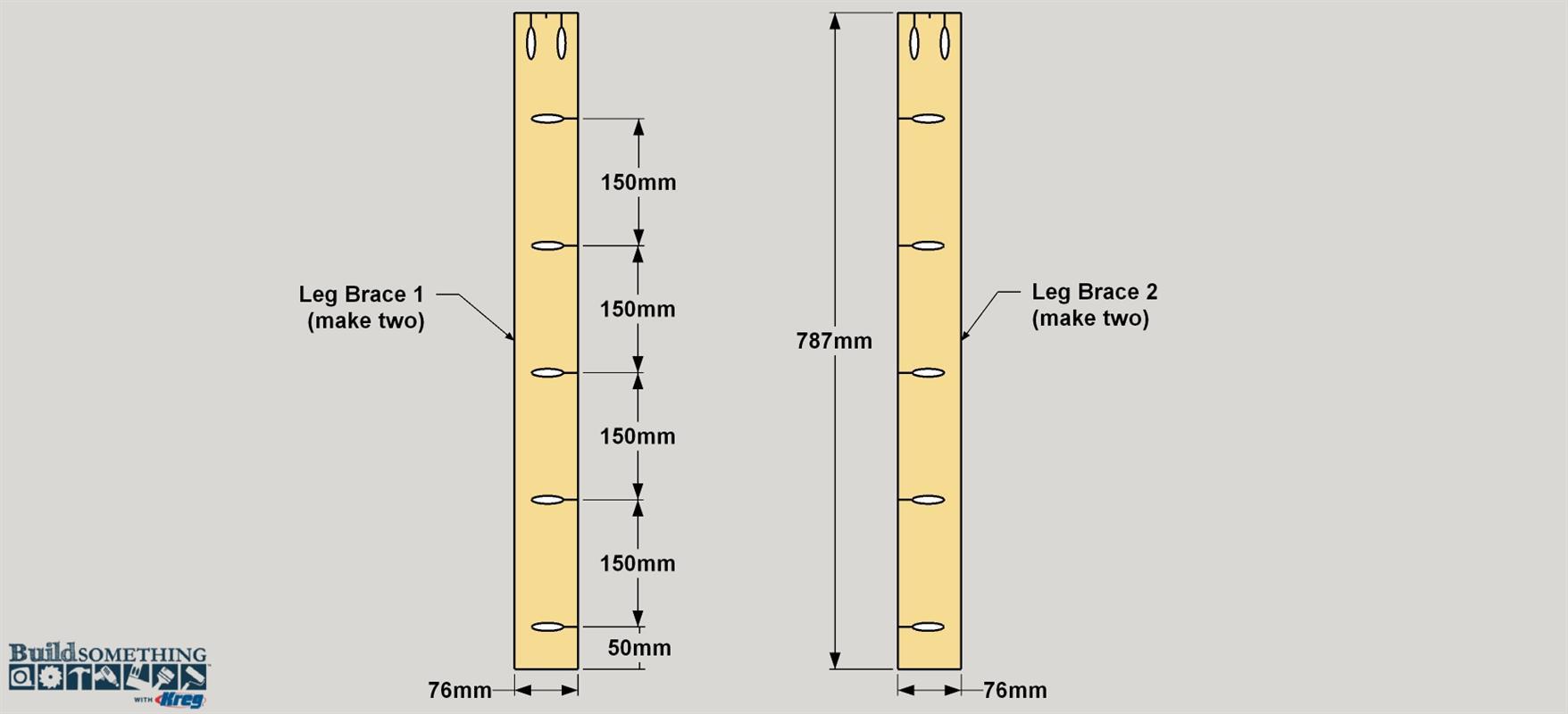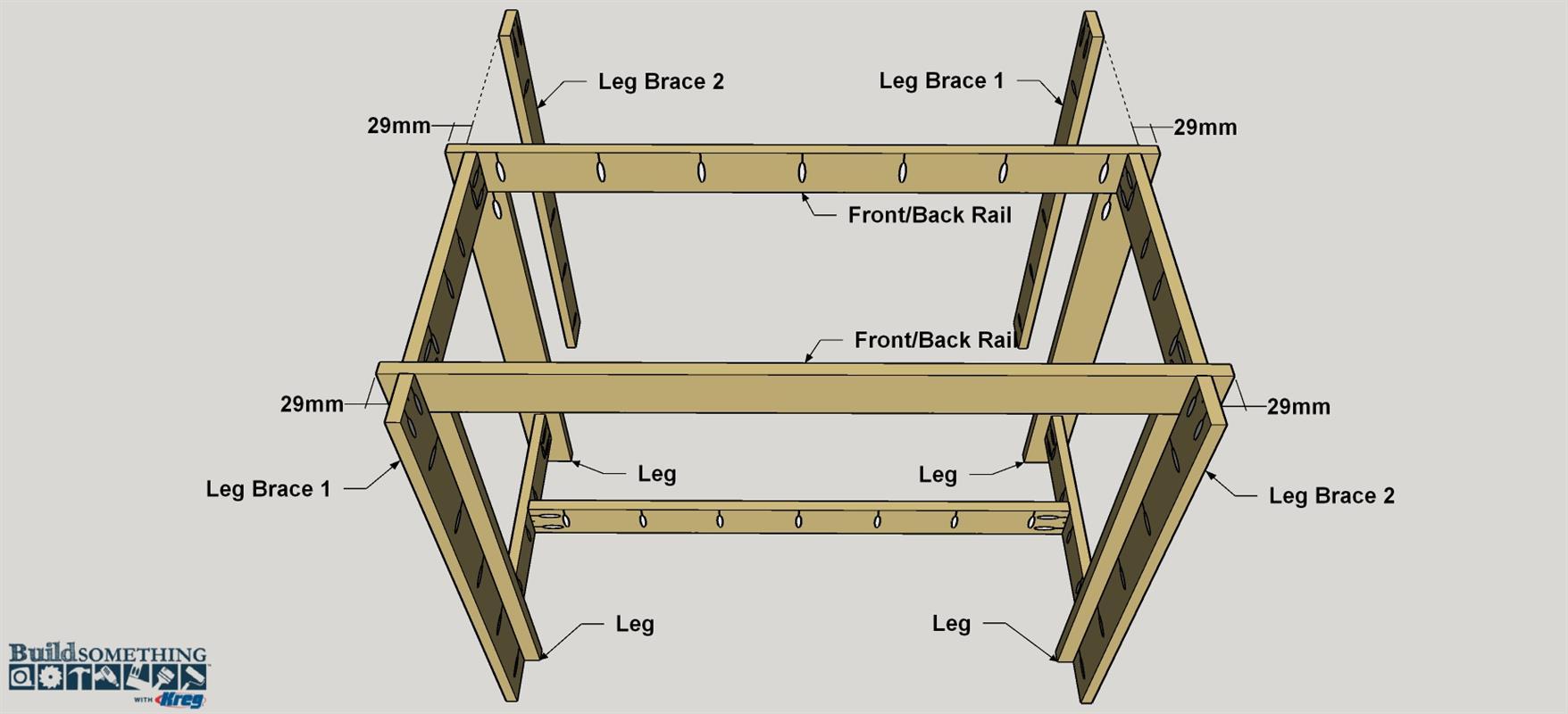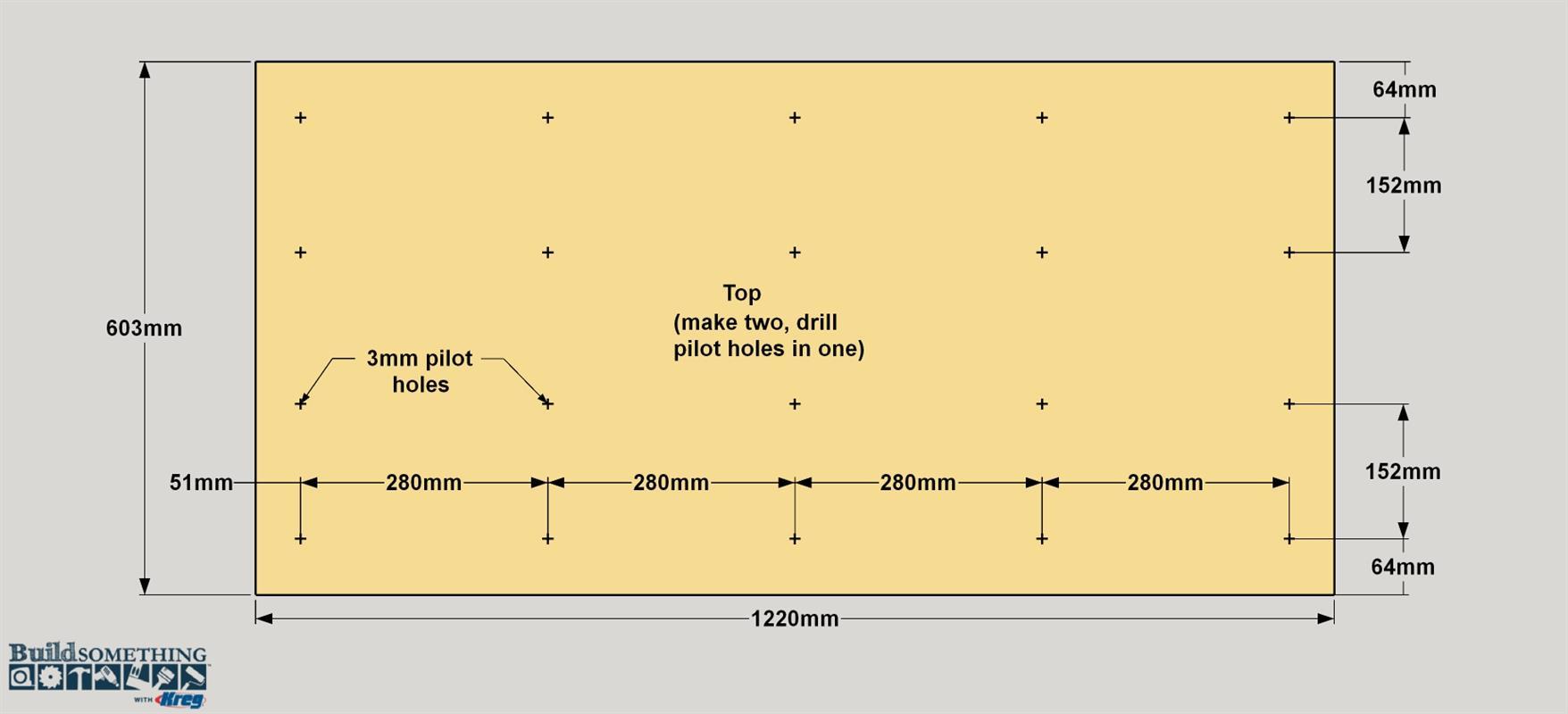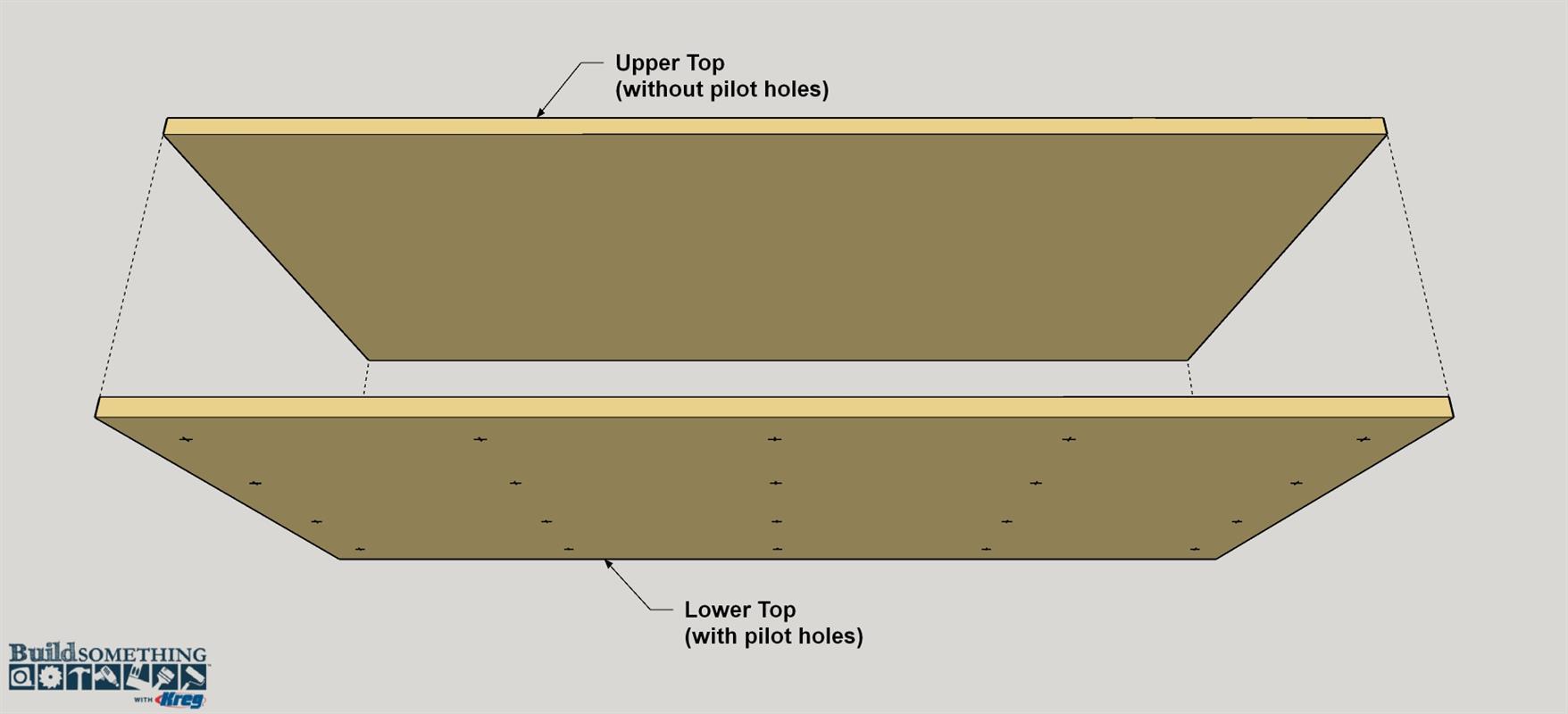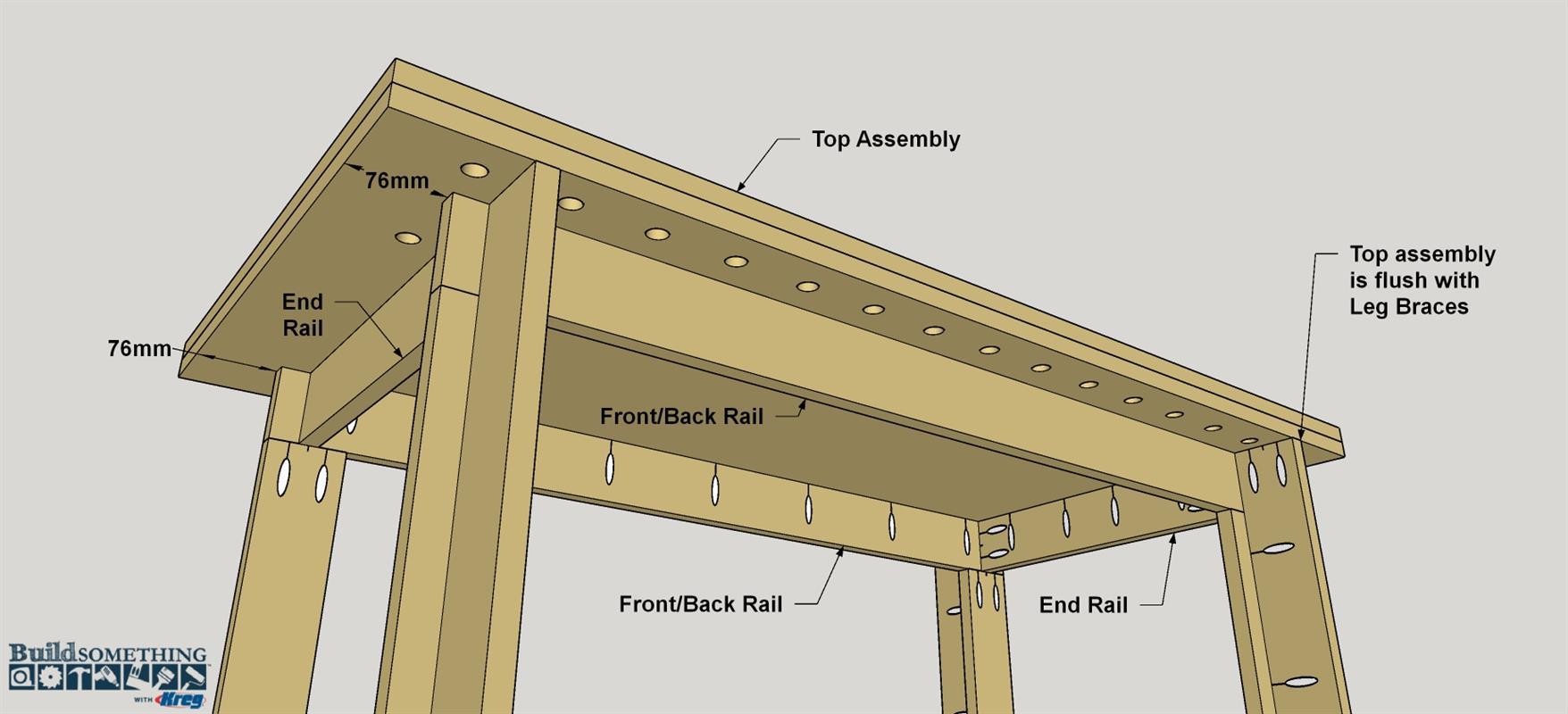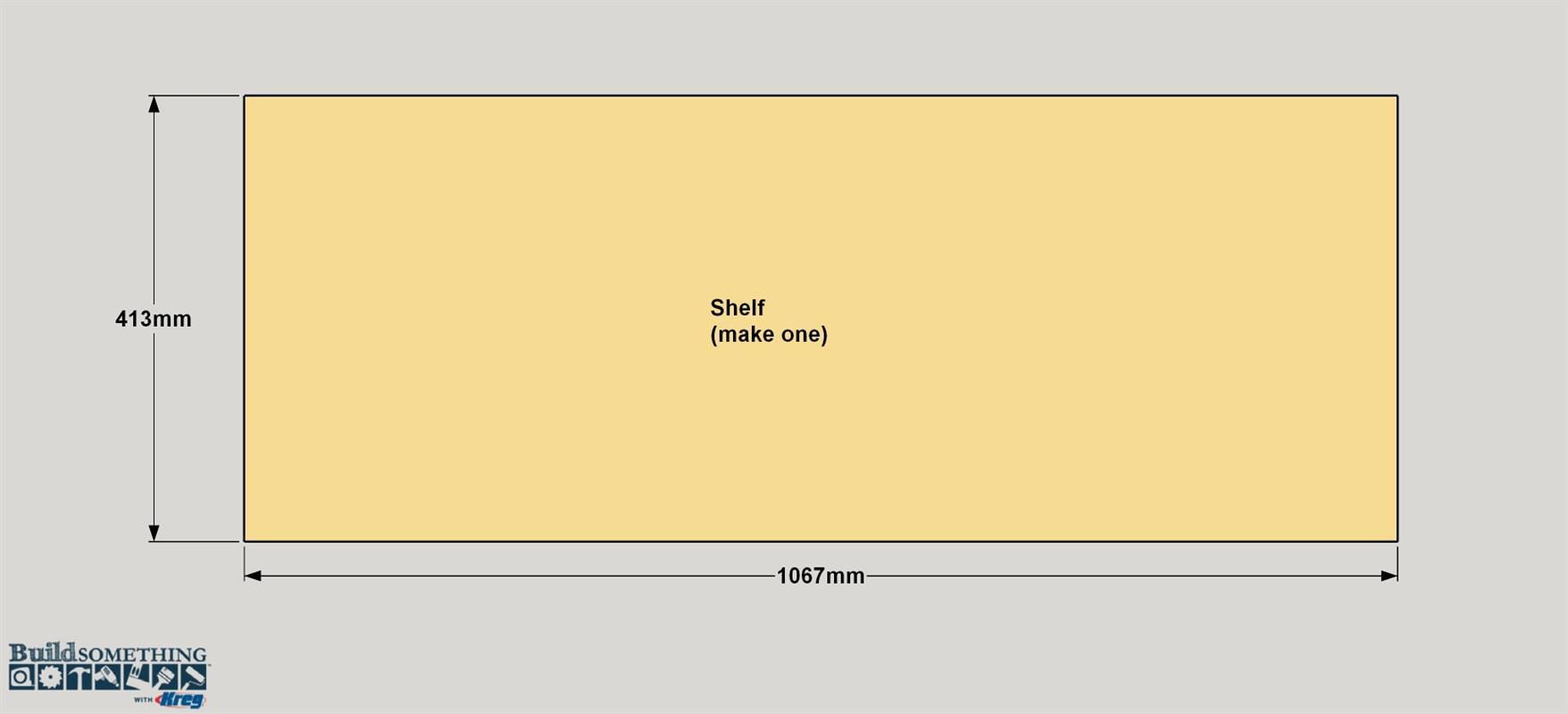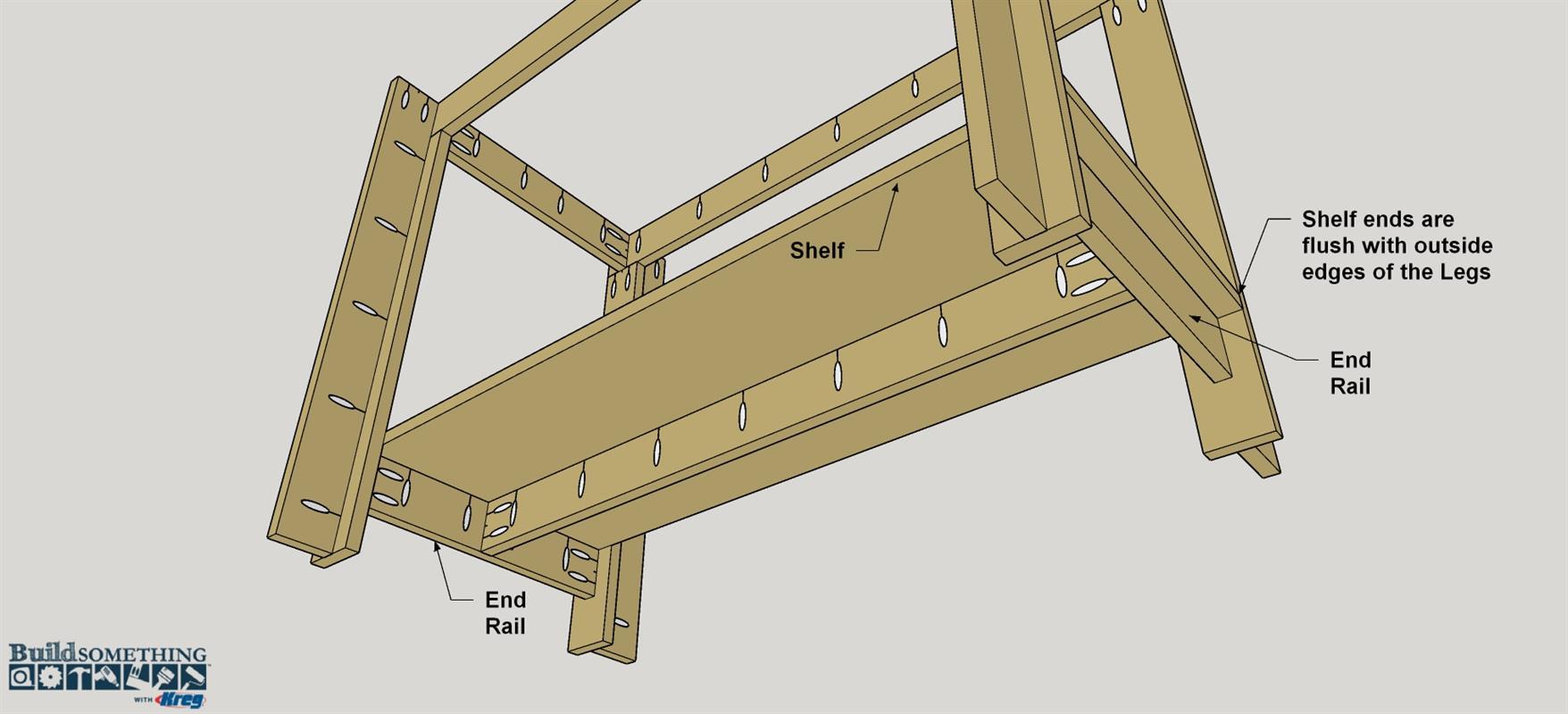One-Sheet Workbench – Metric
By Kreg ToolCreating a sturdy workbench has never been easier or more economical. This one is built from a single sheet of 19mm plywood. Plus, the legs and rails are all cut to the same width, which is easy to do with a circular saw and saw guide. Pocket-hole screws put it all together.
Directions
-
Cut the Parts in Sequence
All of the parts for this project get cut from one sheet of plywood, as shown in the cutting diagram. To get the parts from one sheet, you need to cut them in a certain sequence. Double-check your measurements, and mark each part the name so you don’t get them mixed up. A couple of saw guides make this easier. We used two guides from Kreg: the Accu-Cut™ and Rip-Cut™. First, cut two Tops—we used the Accu-Cut™. Next, set the Rip-Cut™ for a 76mm-wide cut, and then rip a long strip for the Shelf Support, as shown. Now you can crosscut ten 3"-wide strips from the remainder of the sheet. Finally, cut a 413"-wide strip for the Shelf.
-
Cut the Legs to Length
Next, from one of your ten 76mm-wide strips, cut four Legs to final length. We used a miter saw, though you could also use a circular saw—just make sure the cuts are square. Whether you are using a circular saw or a miter saw, make sure that you measure and cut carefully so that all of the pieces end up the same length. Set your Kreg Jig® for 19mm-thick material, and then drill pocket holes in one end of each Leg, as shown. Sand the faces and edges smooth.
-
Make the Front and Back Rails
From two more of the strips, cut two Front/Back Rails to final length. Then drill pocket holes along one edge of each Rail, as shown. Sand the pieces smooth.
-
Attach the Legs to the Rails
Now you can attach two Legs to the Front Rail, and two to the Back Rail, as shown, using 32mm coarse-thread Kreg Screws. Make sure that the pocket holes in the Front and Back Rails are oriented correctly for attaching the bench top later.
-
Make the End Rails
Now, from the remaining pieces of the strips you used for the Legs, cut four End Rails to final length. Then drill pocket holes, where shown, in each of the End Rails. Sand the pieces smooth.
-
Attach the End Rails
Now you can start putting your bench base together by attaching the End Rails. They get mounted, as shown, so that they are centered on the width of the Legs. Make sure that the pocket holes in the End Rails are oriented correctly, and then position the Ends Rails as shown. The upper ones sit flush with the upper edge of the Front/Back Rails. The lower End Rails get installed 76mm up from the lower end of each Leg. Attach the End Rails using 32mm coarse-thread Kreg Screws.
-
Make a Shelf Support
Now cut the Shelf Support to final length, and then drill pocket holes in the ends and along one edge, as shown. Sand the Shelf Support smooth.
-
Attach the Shelf Support
With the Shelf Support complete, you can attach it. Position it between the lower End Rails so the Shelf Support is centered and the pocket holes are oriented correctly. Attach the Shelf Support using 32mm coarse-thread Kreg Screws.
-
Make the Leg Braces
From your four remaining 76mm-wide plywood strips, cut four Leg Braces to final length. Before you drill the pocket holes, note that you’ll need to make two pairs of Leg Braces, as shown. All four have pocket holes in the ends, but the pocket holes along the edges need to be mirror images of each other. Once you’ve laid the pairs of Leg Braces out, drill the pocket holes, and then sand the pieces smooth.
-
Attach the Leg Braces
Now you can attach the Leg Braces to the bench base assembly. Orient them, as shown, so that the pocket holes all face inward. Then attach the Braces using 32mm coarse-thread Kreg Screws.
-
Make the Top
The two-layer top adds lots of strength to the bench. To make it, you’ll need to screw together the two Tops that you cut earlier. So, in just one of the Tops, drill a series of 3mm holes, as shown. Then, on the exit side of the hole, sand if needed to clear away any blowout around the holes that could prevent the two layers from fitting together tightly.
-
Assemble the Top Layers
Now you can bring the two Top layers together. To do that, clamp the two pieces so the edges are as flush as possible, and then drive in 32mm coarse-thread Kreg Screws. Even though the screws aren’t being used in pocket holes here, they work great for attaching the two pieces. Sand the edges smooth after assembly, and sand the upper face, if needed.
-
Drill Dog Holes in the Top
We chose to drill a series of holes in our bench top to improve clamping versatility. The holes receive bench dogs that come with the Kreg Clamp Vise we installed, and they also work with other clamping tools. If you’re adding dog holes, first lay them all out, as shown. Then place your top assembly—upper face up—on a scrap of plywood or something else you can drill into. That way, as you drill the holes, you won’t get as much blowout on the underside. Then you can drill all the holes using a 19mm spade bit. A super-slick tool for doing this is a portable drill guide, as shown in the tip below.
Drill Guide Delivers Straight Holes
Drilling straight holes with a hand drill can be challenging, especially when using large bits. A drill press does this well, but it’s not a tool everyone has. And even with a drill press, working with a large piece can be very challenging. A portable drill guide acts like a miniature drill press by guiding your drill for straight holes. A portable drill guide can be tough to find in home centers, but you can pick one up online. To use it, you just place the drill bit into the chuck on the drill guide, and then attach your drill to the shaft on the chuck. Hold the drill guide in place to position the bit, and then drill.
-
Attach the Bench Top
With the top assembly complete, you can attach it to the bench base, as shown. You’ll see that it fits flush with the Leg Braces at the front and back, and overhangs the bench base equally on each end. Use 32mm coarse-thread Kreg Screws to attach the top to the Front and Back Rails, the End Rails, and the Leg Braces.
-
Complete the Shelf
If you didn’t do so earlier, cut the Shelf to final length now, and then sand the faces and edges smooth.
-
Add the Shelf, Finish, and Hardware
All that’s left to do now is attach the Shelf using 32mm coarse-thread Kreg Screws. Then you can apply a finish to your bench, if desired. Though it might seem like overkill, adding finish to a bench helps it last longer, and makes it easier to clean. We wiped a coat of oil finish on the top and the shelf. We also stained the base structure to give the bench a bit of style, and then mounted the Clamp Vise.



